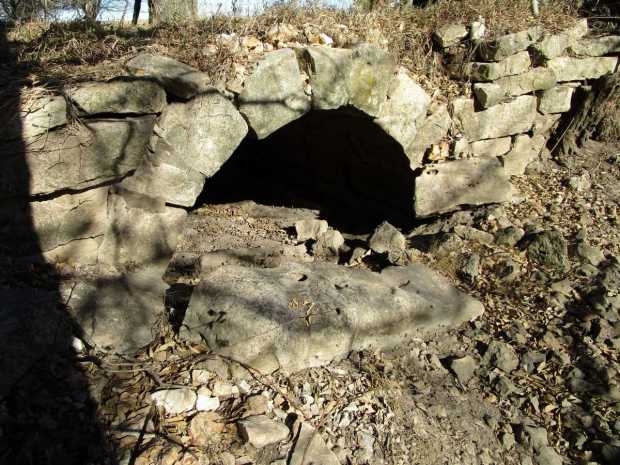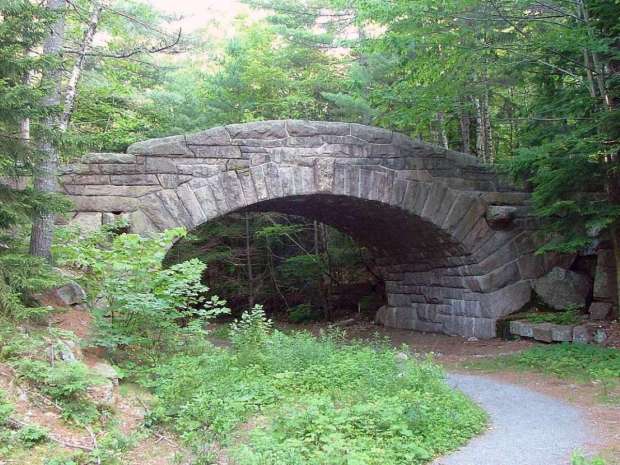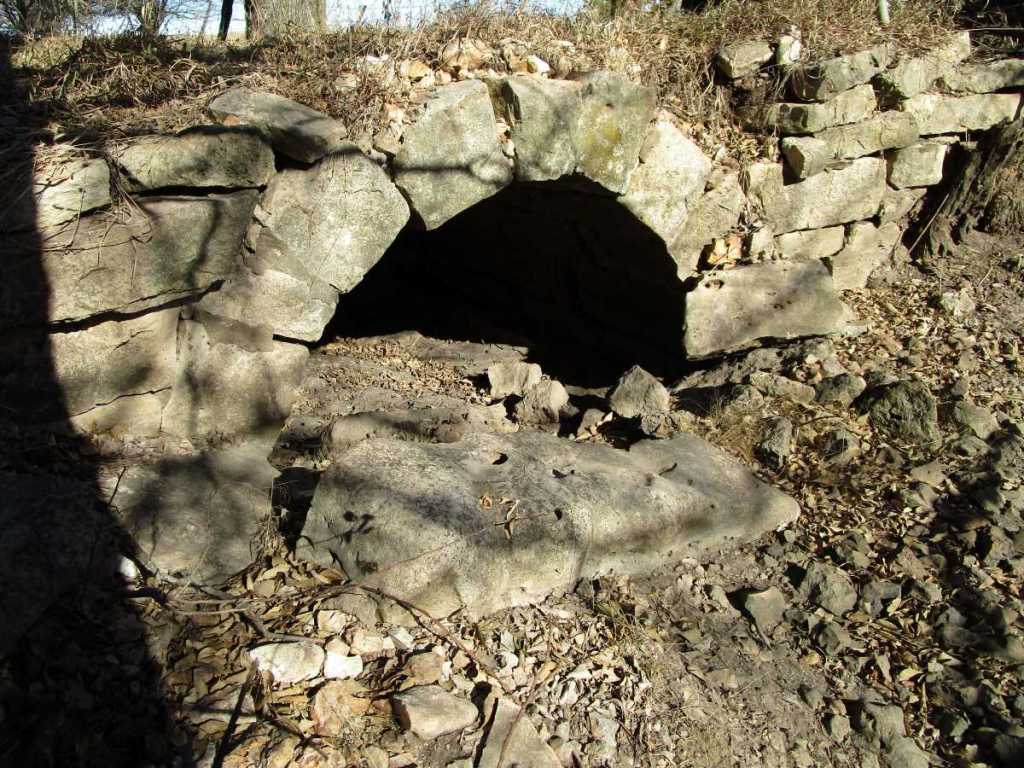The arch, of course, is the part of a stone arch bridge that spans the gap. But why does it work? And, for that matter, what arch shape is the best for a bridge?
Compression
The key to the stability of an arch is in the curved shape, and how that shape holds all forces in compression. That compression is the primary force can be shown by examining mortarless arches. There is nothing in a mortarless arch that “glues” everything together; thus all the individual stones must be pressing against each other (compression) like they do in a vertical wall.

Otherwise, the arch could not stand; outward-pushing forces would cause stones to go everywhere.
The Line of Thrust
The compressive force that holds an arch together is its line of thrust. This compressive stress presses all stones together, making the arch a stable unit. In fact, a stone arch is a structure relying on each individual stone for its part in holding together the whole; yet, at the same time, the arch depends on the shape of the whole to hold all the individual stones in place.
It would seem, then, that a strong arch should itself be built as close as possible to the natural shape the line of thrust tends to be. So what is the shape of the line of thrust? Robert Hooke found a simple solution to the line of thrust problem. He stated “as hangs the flexible line, so but inverted will stand the rigid arch.” If you hang a string downward, you will notice it tends to shape itself into something of a parabolic shape. This holds true regardless of how long or short the string is, and how close or far the ends are held from each other. The shape thus formed is the catenary.
The Catenary
If you hold the end of a chain in each hand, allowing the middle to sag down, and consider each link in the chain to represent the individual stones in the arch, you have a very accurate depiction of how the arch works, only in inverse; inverse because the chain hanging down is entirely in tension, while the arch standing up is entirely in compression. Otherwise the two are quite analogous, as Robert Hooke observed. This shape, the catenary, is what the natural shape for the line of thrust of a free-standing arch wants to be.
An interesting aspect of all this is the fact that the catenary is also the shape described by an object, such as a ball, when it is thrown in the air. If you take a slow-motion video of a ball in flight, you will find that its course in flight will tend to outline a catenary; the different angles the ball is thrown at merely change the overall rise and span of the said catenary. All of this translates into this: gravity acting on objects has a remarkable tendency to pull them into a catenary curve. Thus, a catenary arch is working with gravity. After all, gravity pulling down is what holds the arch together in compression. Thus, all the stones “falling” together in an arch tend to create a catenary-shaped line of thrust, just like the thrown ball or the downward-hanging chain described above. Is it any wonder, then, that a catenary-shaped arch will prove to be a remarkably sturdy structure?
From the above, it would seem at a glance that the correct shape for an arch ought to be a catenary; after all, the line of thrust would pass neatly through the center of the structure. Unfortunately, the line of thrust in the arch for a complete stone bridge is not a catenary!
The Loading of an Arch Bridge
The reason the line of thrust is typically not a catenary in a stone bridge is because the weight of the fill on the bridge tends to be considerably heavier on the ends of the arch than directly above.

This ends up changing the line of thrust towards more of a basket-handle type shape. In the final tally, the fill over a stone arch bridge has considerable influence on the line of thrust. In fact, in some bridges, usually those with basket-handle or Roman arches, the weight of the fill actually is used to keep the line of thrust within the arch! This means that the arch would actually collapse if there was no fill over it. Another way of looking at this is to think of the fill as pressing the arch stones together, this external compression thus forcing the arch to stay in place rather than collapse.
The Arch Thickness
As it happens, there is a good reason why many stone arch bridges are perfectly stable even though the arch shape is not a catenary. Nor is the fill the only thing that can hold an arch together. The fact is, many stone arch bridges are built with relatively thick arches. These arches are so thick that the line of thrust, even if it does not follow the curve of the arch, still is safely contained well within the arch. Thus, extra arch thickness can be used to ensure stability.
Another trick occasionally used to guarantee that the line of thrust stays within the arch is to build the arch in a tapered fashion.

By making a Roman arch or basket-handle arch thicker at the ends than at the keystone, the line of thrust can be contained within the arch’s thickness. This trick allows for the building of stable arches without excess thickness (and a corresponding hump in the road) at the top of the bridge.
For some practical applications of arch theory, please see The Secret of the Arch: Practical Designs.
